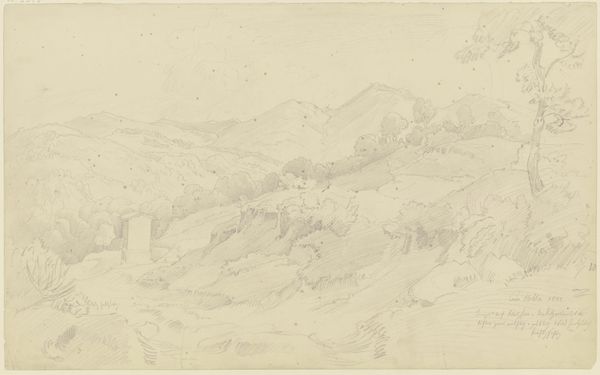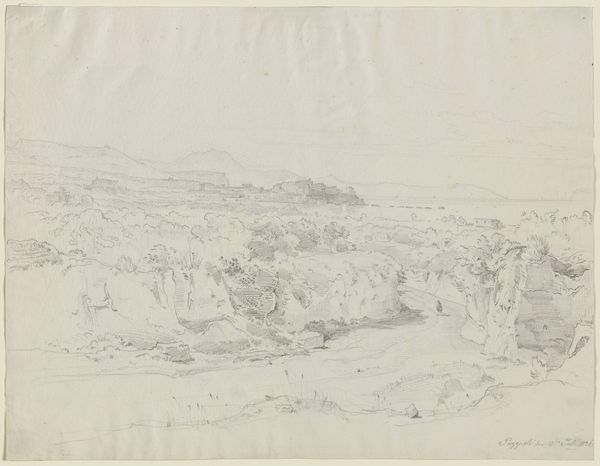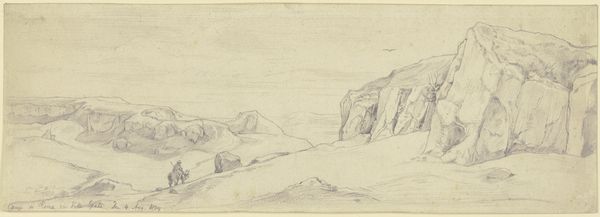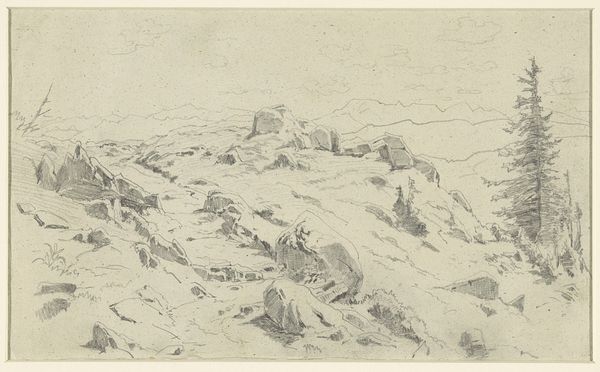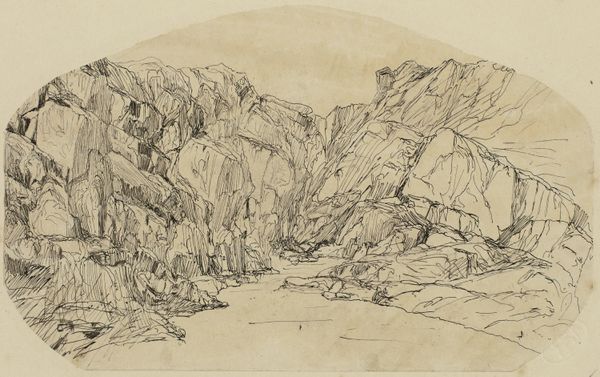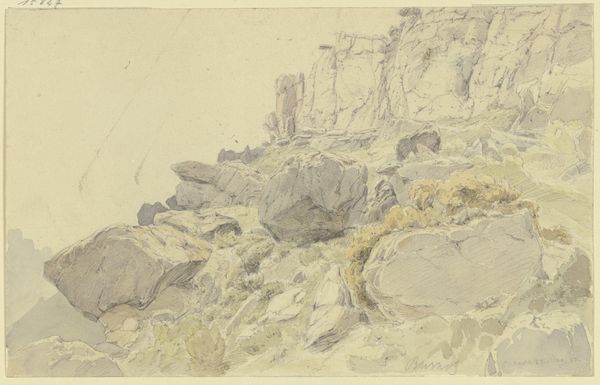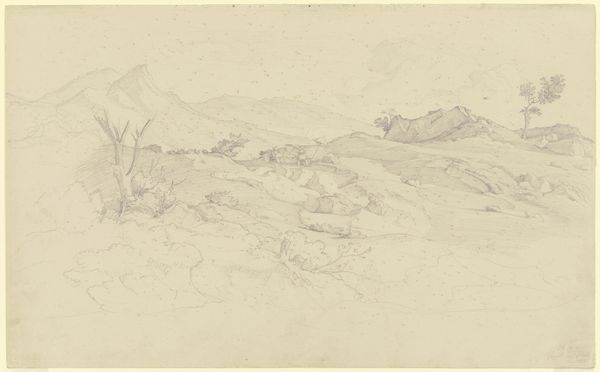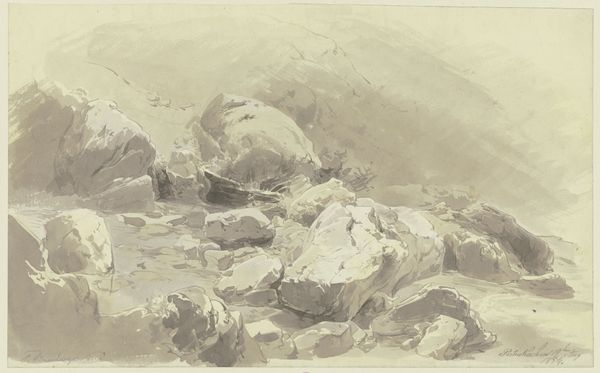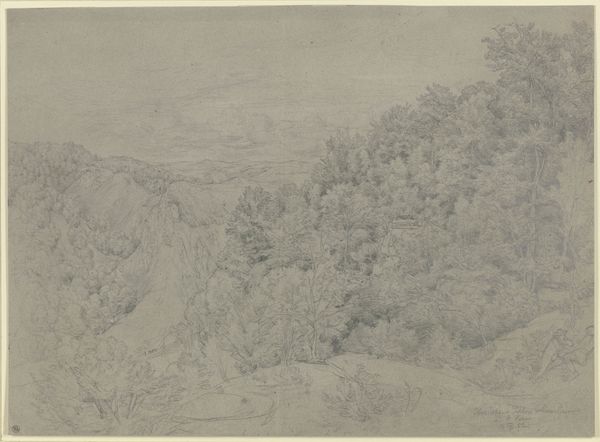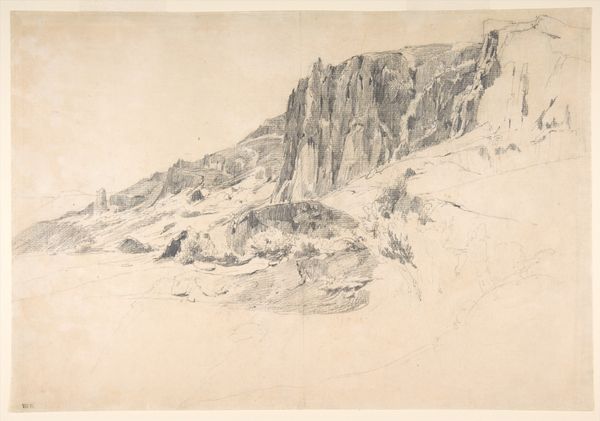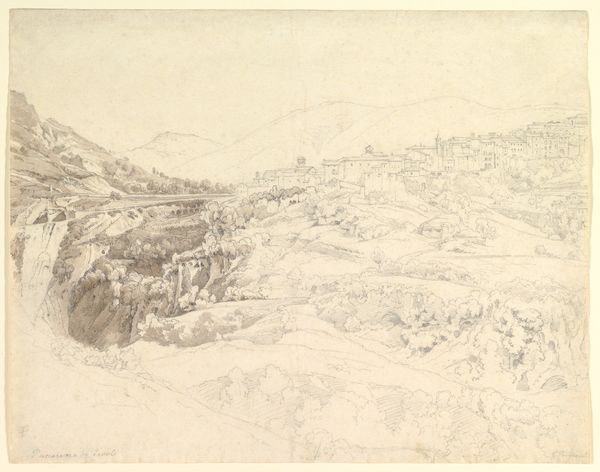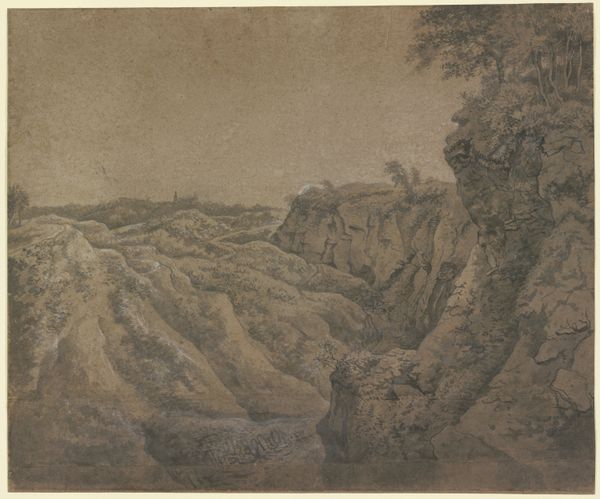
drawing, paper, ink, pencil
#
drawing
#
pencil sketch
#
landscape
#
paper
#
ink
#
pencil drawing
#
romanticism
#
pencil
Copyright: Public Domain
Karl Peter Burnitz made this landscape near Toledo, in pencil and paper, sometime in the 19th century. Burnitz’s image reflects the 19th-century European fascination with the “picturesque,” a visual aesthetic that celebrated the beauty of untamed nature, and the aesthetic experience of travel to sublime landscapes, such as the Spanish countryside. This fascination developed alongside the rise of tourism, when the expansion of railways made travel accessible to the middle classes. The very act of sketching ‘en plein air’, or outdoors, as Burnitz likely did here, was a way of personally experiencing a landscape made newly accessible to the art-viewing public. We can better understand this drawing by considering the historical context of tourism in 19th century Europe. Looking at train timetables, tourist guides and travelogues of the period will help us to see how the meaning of art is so often found outside the frame.
Comments
No comments
Be the first to comment and join the conversation on the ultimate creative platform.
